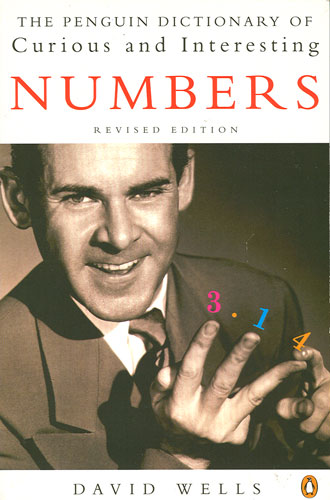So yesterday was my 61st birthday. I had some fun getting out the trusty old ruler and compass and making a Pythagorean-style pattern with 61 dots. Note that it consists of six “tetractys” patterns whirling around a central dot. Tetractys was what the Pythagoreans called the familiar bowling-alley pattern of 1+2+3+4. One can also speak of 61 as a hexagonal number.

I figured all this stuff out in 1985 and 1986; that is, how to represent many of the “birthday numbers” (from 1 – 100) as nice patterns of dots. I uploaded a very useful file about this for the world today:
Dot Patterns for Birthday Cards
[The file is the Adobe Reader PDF format; I found that with my latest version of Firefox, I needed to install the new free Adobe Reader 8.0.]
The material is drawn from my book MIND TOOLS: The Five Levels of Mathematical Reality (Houghton Mifflin, Boston 1987). Twenty years ago! I think it’s out of print but there’s used copies on Amazon.

For the last twenty years, I’ve been putting these dot patterns on almost every birthday card I’ve signed—and now you can do it too!
By the way, you’ll notice that some numbers don’t seem to have any nice dot patterns. For these difficult birthdays (or anniversaries), I turn to Plan B:
David Wells, The Penguin Dictionary of Curious and Interesting Numbers.

(I always get a chuckle out the picture on the cover because the guy looks like such a complete pinhead.)
This valuable, nay, indispensable book has an entry for—well, not all—but lots of numbers. Though, let it be said, many of the entries describe properties that are not exactly box-office gold. Like, “1/61 has decimal period 60 which includes 6 occurrences of each of the digits 0 to 9, the smallest reciprocal whose period has this property.”
The Mathematician Godfather makes you an offer you can’t understand… The virtue of my Dot Patterns for Birthday Cards is that most of them are visual patterns you can readily fasten onto. Patterns for a cheerful, uncomplicated Birthday Pig.

By the way, I first heard about Wells’s book from the mathematician Richard Guy when I jokingly asked him what, in his opinion, was the first uninteresting number. He said it would the first number I would not find in the Penguin Dictionary of Curious and Interesting Numbers.
The reason my question wasn’t entirely serious is that asking about the first uninteresting number poses a paradox (related to the Berry Paradox in the philosophy of mathematics). For the first uninteresting number is, hmm, kind of interesting.

Wells, too, is aware of the paradox, and he lists 51 as being the first number with no interesting properties, and duly notes that this makes it interesting.
The first number so truly dull that Wells doesn’t even list it all is—drum roll—54. But if you’re 54, don’t despair. It’s meta-interesting!









March 23rd, 2007 at 5:12 pm
54, I resemble that remark.
And I disagree, 51 is very interesting. It is 3 * 17.
July 10th, 2008 at 1:38 pm
I agree with rs, 51 is very interesting.
July 10th, 2008 at 1:40 pm
**** you, you son of a *****, *******!!!
July 14th, 2008 at 4:35 am
hey…. swear master…. stop that!! that’s way out of left field….